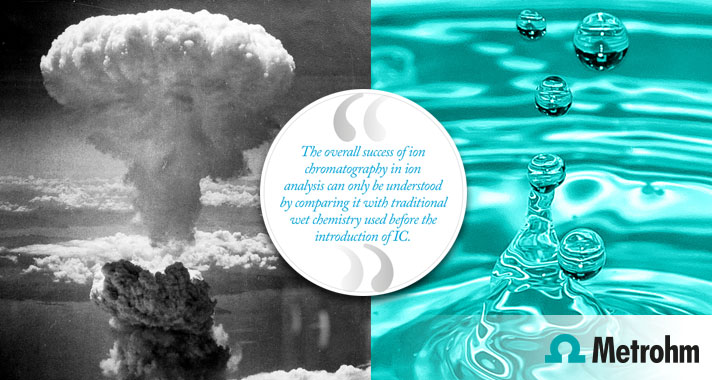Three gurus discuss the milestone advances and key research groups that guided ion chromatography down its positive path, post-Manhattan Project.
Ever since the innovation injection that was the “Manhattan Project”, ion chromatography has defied probability by exhibiting almost continuous evolution into its current state-of-the-art form. Here, our three gurus – representing the two major commercial players and a significant academic contributor – reflect on the major milestones and future direction of this mature but still advancing technique.
Where does ion chromatography fit within the world of analytical chemistry?
Joachim Weiss: Over the past almost 40 years that encompass its birth and development, ion chromatography (IC) has become the most dominant method in ion analysis, replacing many time-consuming and laborious wet-chemical methods such as gravimetry, nephelometry, and turbidimetry. While in its earliest embodiments IC focused primarily on the analysis of inorganic anions and cations, today IC has an important role in the analysis of organic ions as well. Although part of liquid chromatography (LC), the term ion chromatography was created to make people aware of the fundamental differences in the separation and detection of ions as compared to traditional reversed-phase liquid chromatography (RPLC) of molecular organic species. Today, the term ‘ion chromatography’ can be defined as an umbrella term for all kinds of liquid chromatography techniques that are suitable to separate and detect ionic or ionizable species.
Paul Haddad: IC is unquestionably the premier analytical technique for the determination of low molecular weight organic and inorganic anions. It is also a very useful technique for the determination of low molecular weight inorganic and organic cations. I should note that for inorganic cations, modern spectroscopic methods, such as inductively coupled plasma atomic emission spectrometry (ICP-AES) and ICP- mass spectrometry (MS) are both faster and more sensitive.
Markus Läubli: Ion chromatography is a crucial method for the analysis of inorganic as well as organic ions. For anion determinations, I would agree with Paul Haddad and even describe it as the method of choice. With inline sample preparation techniques, it’s possible to analyze ions in almost any matrix with high selectivity and sensitivity within a short time. While cations are often analyzed using spectroscopic methods, ion chromatography can be a more favorable alternative. For ammonium compounds, for example, IC is again the method of choice. Also, speciation analysis is getting more and more in the focus of modern ion chromatography.









